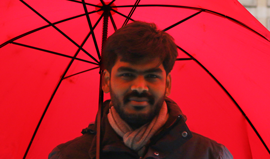Sprint 6
Our Game has a name: DataVrij!
DataVrij is a turn based board game that helps Dutch families explore the social en technical implications, of personal data as a currency in online environments, on their daily lives.
Is a game about personal data, developed for Dutch families who visit the Netherlands Institute for Sound and Vision. The game is all about helping these families to become aware of how often they get asked for their personal data in online environments and how often they accept these kinds of requests. Personal data as a currency.
The setting is a board game with a dice (turn based) where the families can come onto different tiles where they get asked for their personal data, or they get a reward instantly (like a secret passage). The genre of the game is digital board game.
With lots of game objectives and rules but also lots of different tiles, all those information to be found on our Manual and research paper!
There is a challenge in our game, how much data are you willing to give as a visitor in order to get there first?
People move in the game by throwing the dice, answering data questions (from this they get steps forward/backwards), secret passages and swap tiles. Furthermore, the objects in the game are the pawns the users use, in the version we have written in the manual, otherwise it could also be their phones/arduino’s.
What sets this project apart, are the three different benefits the families get from playing DataVrij: The game helps them becoming aware of how often they get asked for their personal data and how often families give this information away (for incentives). The game creates an educational moment for parents, which they can use for instructing their children on how to be safe (in the parents own opinion) on the Internet when it comes to their personal data. The game will help family members form their own opinions on the matter and it will help them to start thinking about this subject in their daily lives.
Additionally, we have created a research poster, project posters and booklets, experiment methods and results and sketches for the ideal space of our game.
Our presentation is going to consist of a final video on media Lab.
so.. How badly do you want to win?























